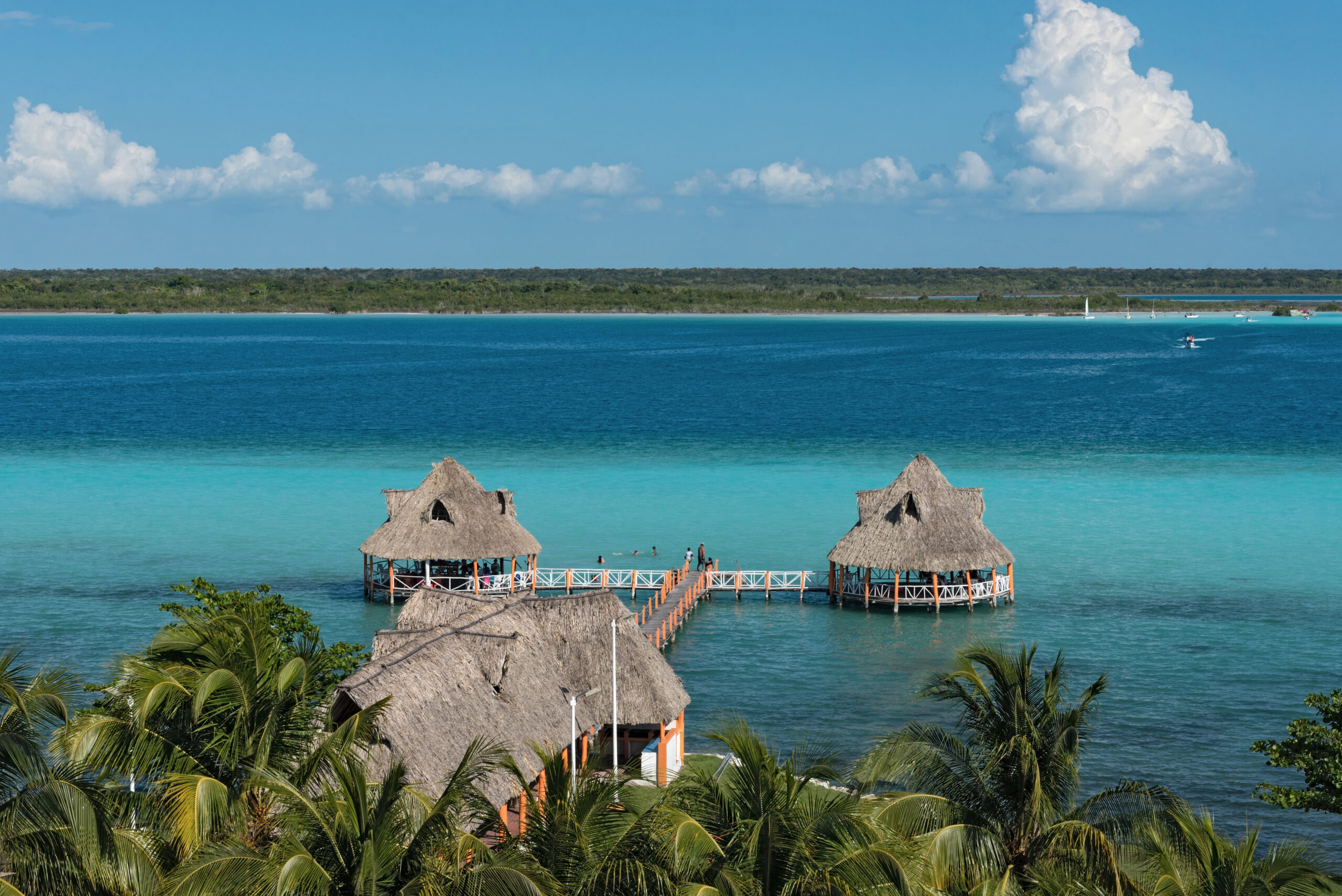If you’ve ever tried to choose a Caribbean cruise, you’ve probably noticed that nearly every itinerary is labeled Eastern, Western, or Southern Caribbean. Figuring out what that really means can feel like decoding cruise jargon. Which region has the best ports? Which offers the calmest seas or the most family-friendly adventures? And is one really better than the others?
After more than 45 cruises (including at least one Caribbean sailing every year for the past two decades), we’ve experienced it all: short 3-day getaways, two-week voyages, girls’ trips, and family cruises with everyone from infants to grandparents. As for Eastern vs Western vs Southern Caribbean, each region offers something unique, but they’re far from interchangeable.
In this post, I’ll break down the key differences between the Eastern, Western, and Southern Caribbean cruise regions—what makes each special, what to expect in their most popular ports, and which itineraries work best for different types of travelers. By the end, you’ll have a clear sense of which Caribbean region fits your travel style best (and which ports might be worth skipping).
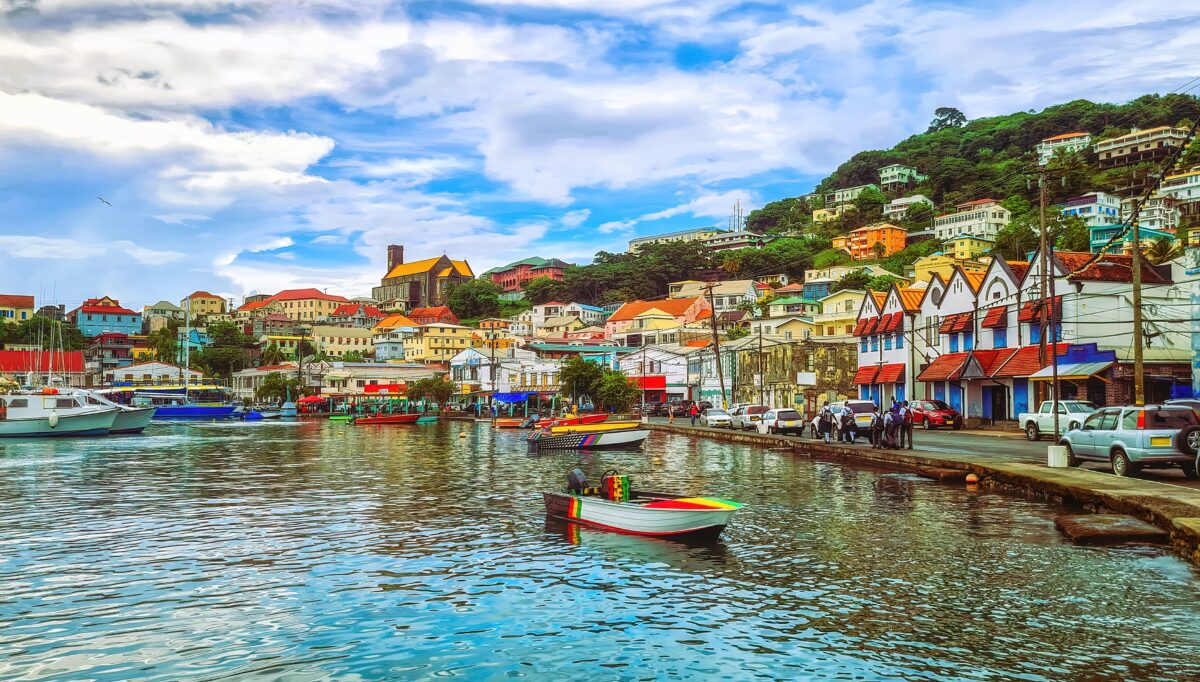
Understanding the Three Caribbean Cruise Regions
When you start researching Caribbean cruises, you’ll quickly notice that most Caribbean itineraries fall into one of three categories: Eastern, Western, or Southern Caribbean. These labels describe broad geographic regions. Each offers a distinct mix of islands, activities, and overall travel style. Understanding these differences helps you choose an itinerary that fits your family’s priorities without getting lost in cruise-line marketing terms.
How Cruise Lines Define Each Region
Cruise lines group the Caribbean according to sailing routes and the ports ships usually visit. Most itineraries depart from Miami, Fort Lauderdale, or Port Canaveral, though you’ll also see departures from Galveston, New Orleans, New York/New Jersey, and San Juan. Because these routes overlap, the borders between “Eastern,” “Western,” and “Southern” aren’t exact, but here’s the general breakdown:
- Eastern Caribbean cruises sail northeast from Florida or the Bahamas toward St. Thomas, St. Maarten, San Juan, and private islands like Perfect Day at CocoCay or Half Moon Cay. The islands lie close together, so sailing distances are short and seas are calm. That’s great for maximizing port time.
- Western Caribbean itineraries head south and west to Cozumel, Grand Cayman, Jamaica, Belize, and Roatán. These ports blend adventure and culture, with activities such as snorkeling, cave tubing, and exploring ancient Mayan ruins being common highlights.
- Southern Caribbean routes travel farther south, often round-trip from San Juan to islands such as Aruba, Curaçao, Bonaire, St. Lucia, and Grenada. You’ll find exotic scenery, fewer crowds, and a deeper cultural flavor.
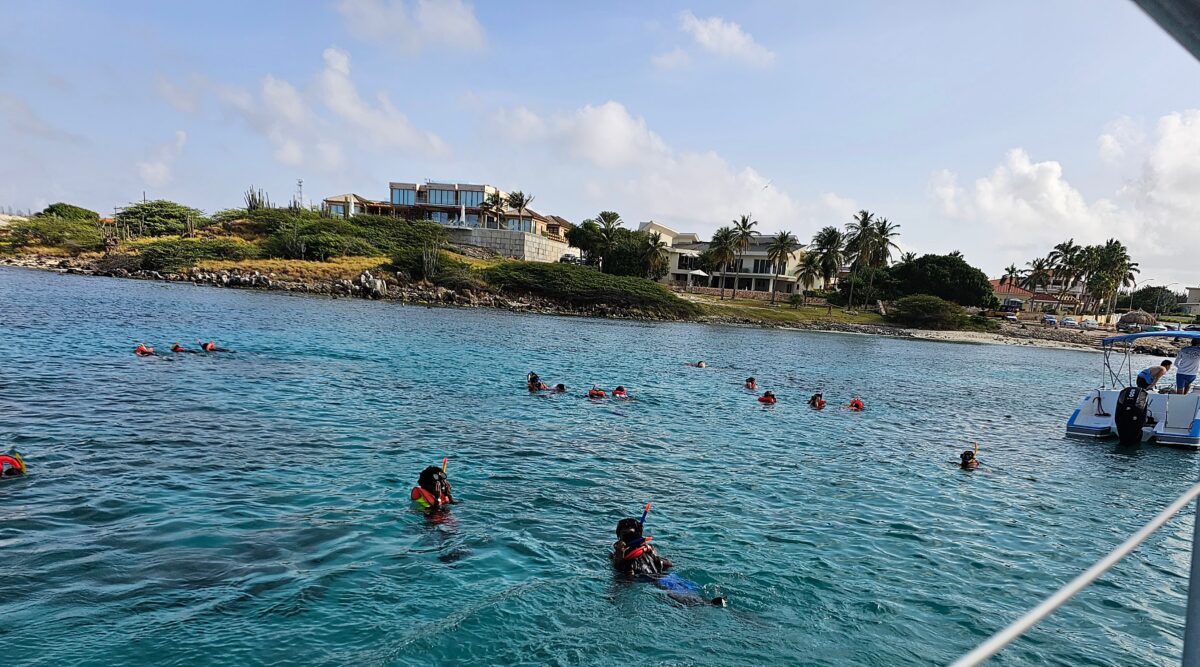
Cruise Length and Departure Ports
Your choice of region also affects cruise length and embarkation port.
- Eastern Caribbean sailings are most often 7 nights, round-trip from Florida, with a few longer options from New York or Baltimore. Short hops between islands mean more days (and longer days) ashore. This can be ideal for families who want maximum exploration with minimal transit time.
- Western Caribbean cruises typically last 5 to 7 nights, sometimes stretching to ten. They depart from Florida, Galveston, New Orleans, or Tampa, and offer a convenient option for travelers within driving distance of the Gulf Coast.
- Southern Caribbean itineraries usually run 7 to 10 nights and visit Aruba, Curaçao, Bonaire, St. Lucia, Grenada, and Barbados. Most sail round-trip from San Juan, Puerto Rico, which eliminates two or three sea days you’d otherwise spend reaching these islands from Florida. Some longer sailings from Florida add those sea days to reach the southernmost ports, but whether you fly to San Juan or cruise the longer route, you’ll be rewarded with some of the Caribbean’s most scenic and least-crowded destinations.
A Quick Note on Geography
Geographically, the Eastern Caribbean is made up of smaller islands close together with turquoise beaches and top-notch snorkeling. The Western Caribbean includes larger islands and coastal ports rich in jungle and history. The Southern Caribbean, sitting just outside the main hurricane belt, enjoys steady sunshine year-round.
These natural distinctions explain why Caribbean itineraries feel so different in pace and personality, and why the “best” region depends on what matters most to your family.
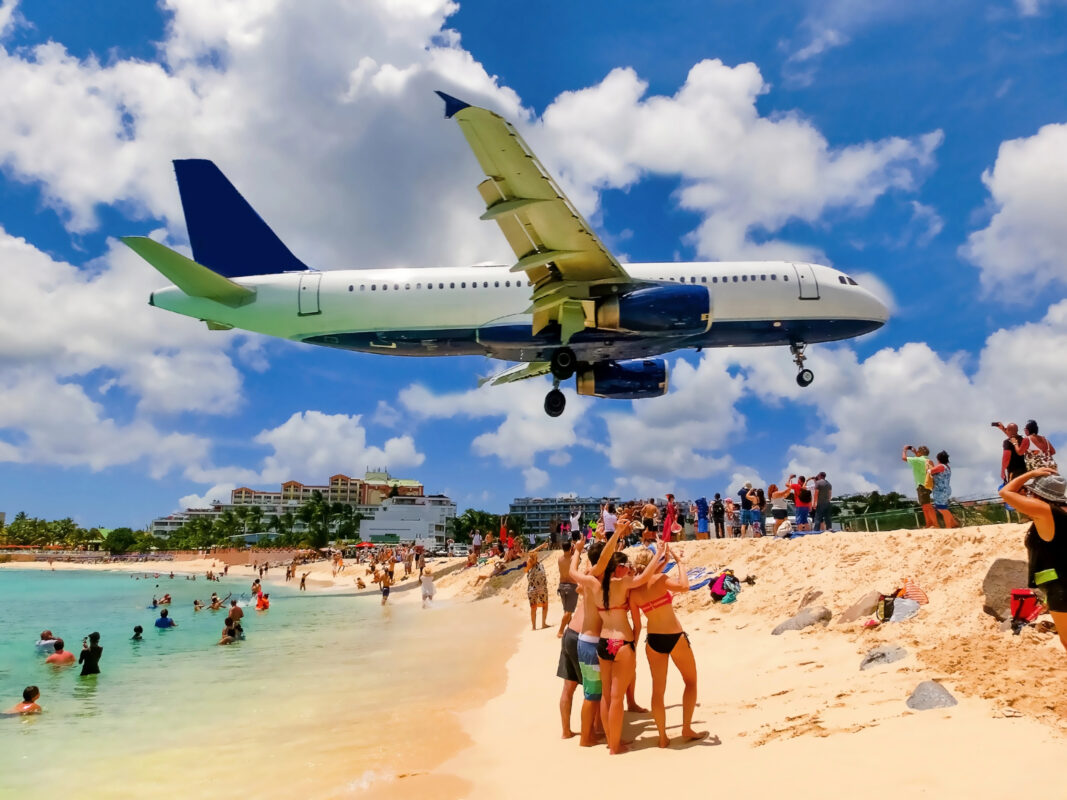
The Best Answer?
After sailing dozens of cruises across every region, I’ve learned that joy in the Caribbean isn’t limited to any one itinerary. If you haven’t spent much time in the region, let the ship and price guide your decision rather than overanalyzing geography. Each area offers its own version of paradise.
That said, my personal favorite remains a Southern Caribbean cruise round-trip from San Juan. It combines stunning scenery with extra time in Puerto Rico. It’s an easy place to add a couple of pre- or post-cruise days and start your vacation early.
Next, let’s look more closely at the individual regions. Learn about the top ports, family-friendly highlights, and a few trade-offs to consider before you book.
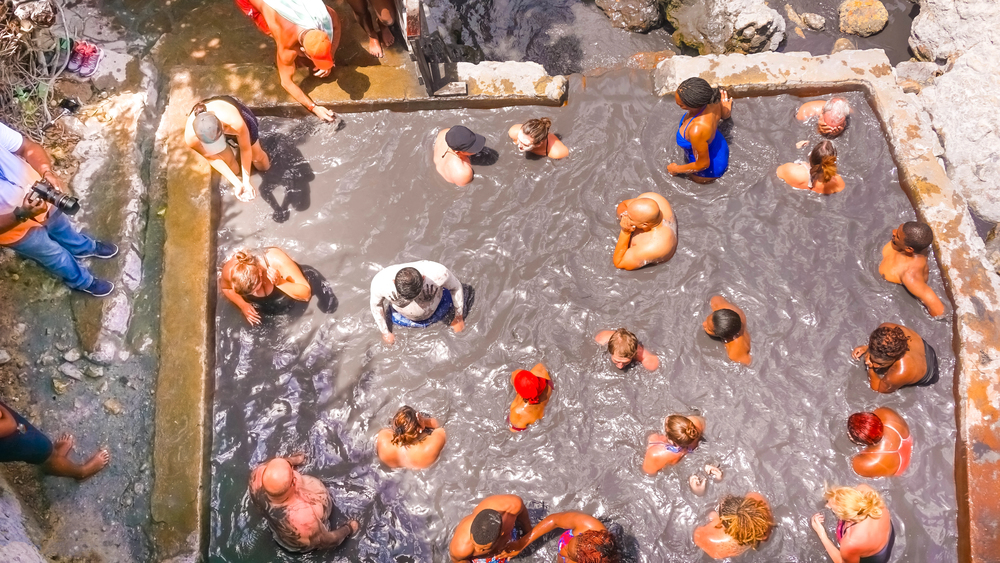
Visitors unwind in the volcanic mud baths of St. Lucia’s Sulphur Springs, a signature island experience. (Credit: DepositPhotos) 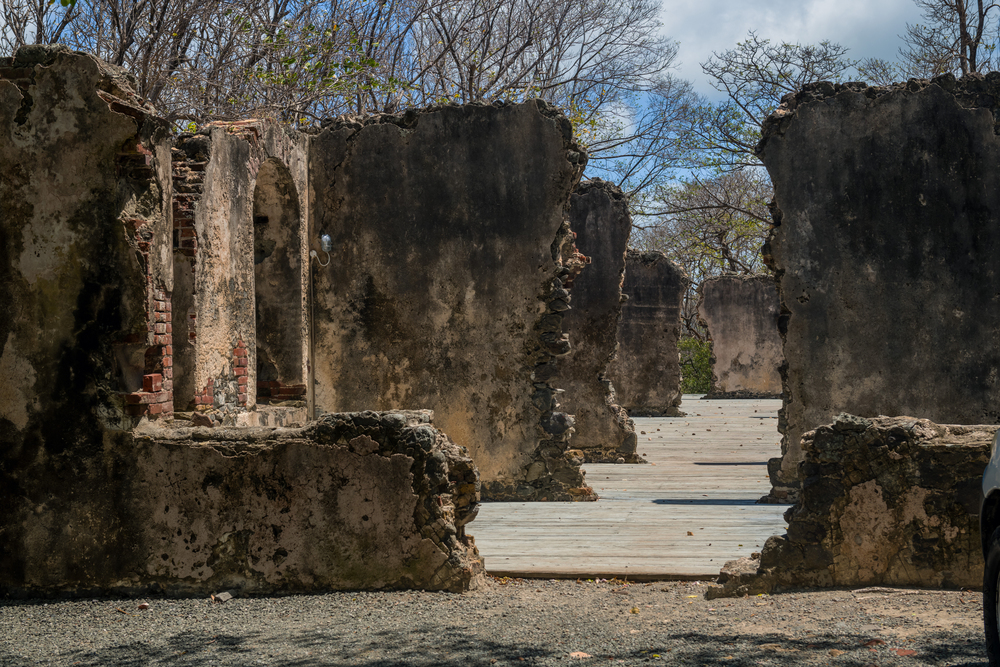
Broken interior walls of the historic Fort Rodney on Pigeon Island in Saint Lucia. (Credit: DepositPhotos) 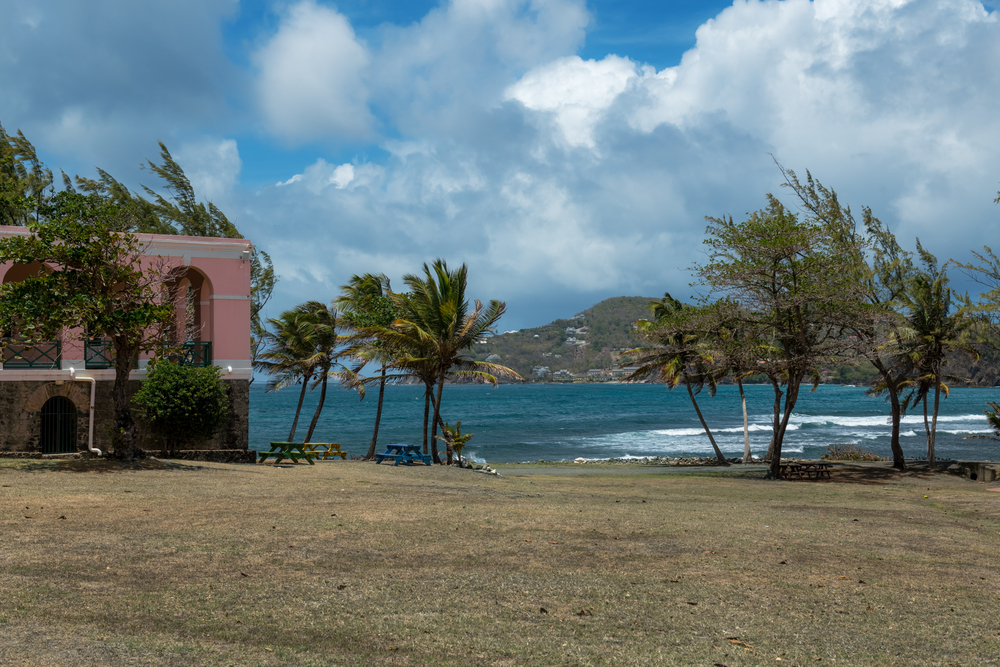
A scenic view of the coastline on Pigeon Island in Saint Lucia. (Credit: DepositPhotos)
The Eastern Caribbean: Easy Island-Hopping and Classic Beach Escapes
If your idea of the perfect cruise involves turquoise water, white-sand beaches, and plenty of time ashore, the Eastern Caribbean is a natural fit. The islands sit close together, which means shorter sailing distances, calmer seas, and more days exploring on land. It’s a great fit for first-time cruisers and families who enjoy seeing new islands every day without extended breaks between ports.
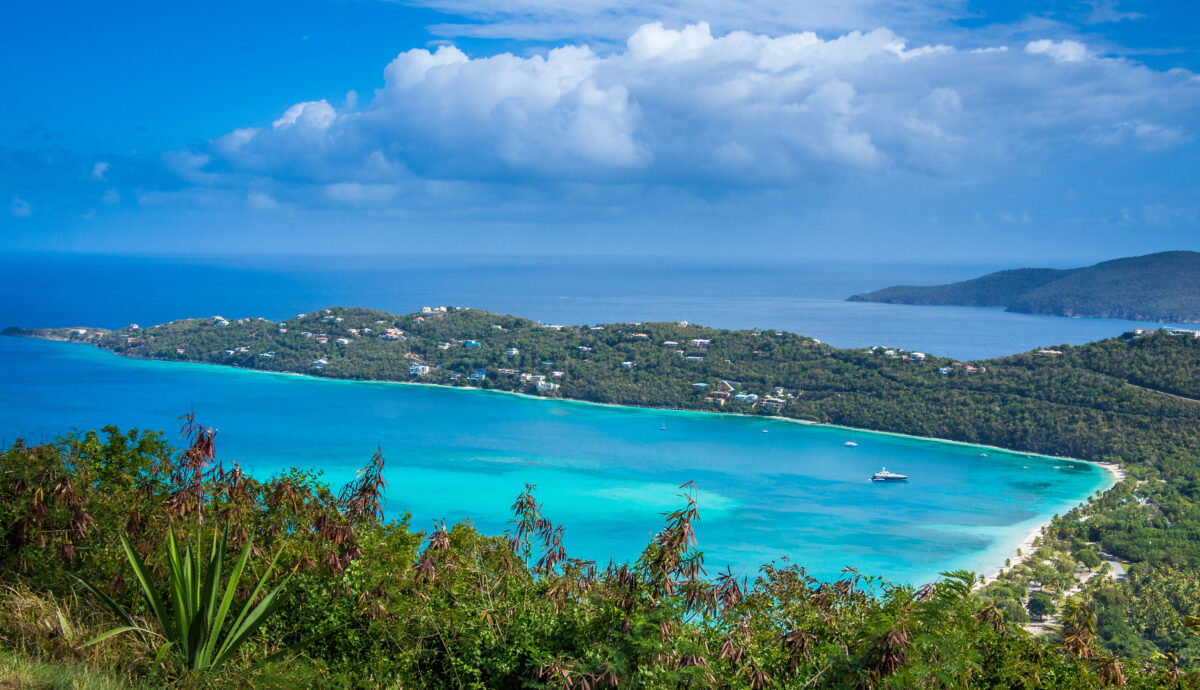
Top Ports and What to Expect
- St. Thomas, U.S. Virgin Islands – Famous for duty-free shopping and Magens Bay Beach, one of the Caribbean’s most photographed stretches of sand. Families can ride the Paradise Point Skyride or visit Coral World Ocean Park for kid-friendly marine encounters. (If you are interested in Caribbean jewelry shopping, St. Thomas is one of the best stops!)
- St. Maarten / St. Martin – One island divided between two cultures. On the Dutch side, families enjoy bustling Philipsburg for beach time and duty-free shopping, plus the thrill of watching planes skim directly overhead at Maho Beach. The French side in Marigot offers a slower pace with outdoor cafés, bakeries, and scenic coastal views that feel a world away.
- San Juan, Puerto Rico – Often featured as either a port of call or an embarkation point for longer Southern itineraries. Explore Old San Juan’s colorful colonial streets and centuries-old forts, or sample local flavors along the waterfront.
- British Virgin Islands (Tortola or Virgin Gorda) – Home to the dramatic granite formations of The Baths and calm harbors perfect for snorkeling and catamaran tours.
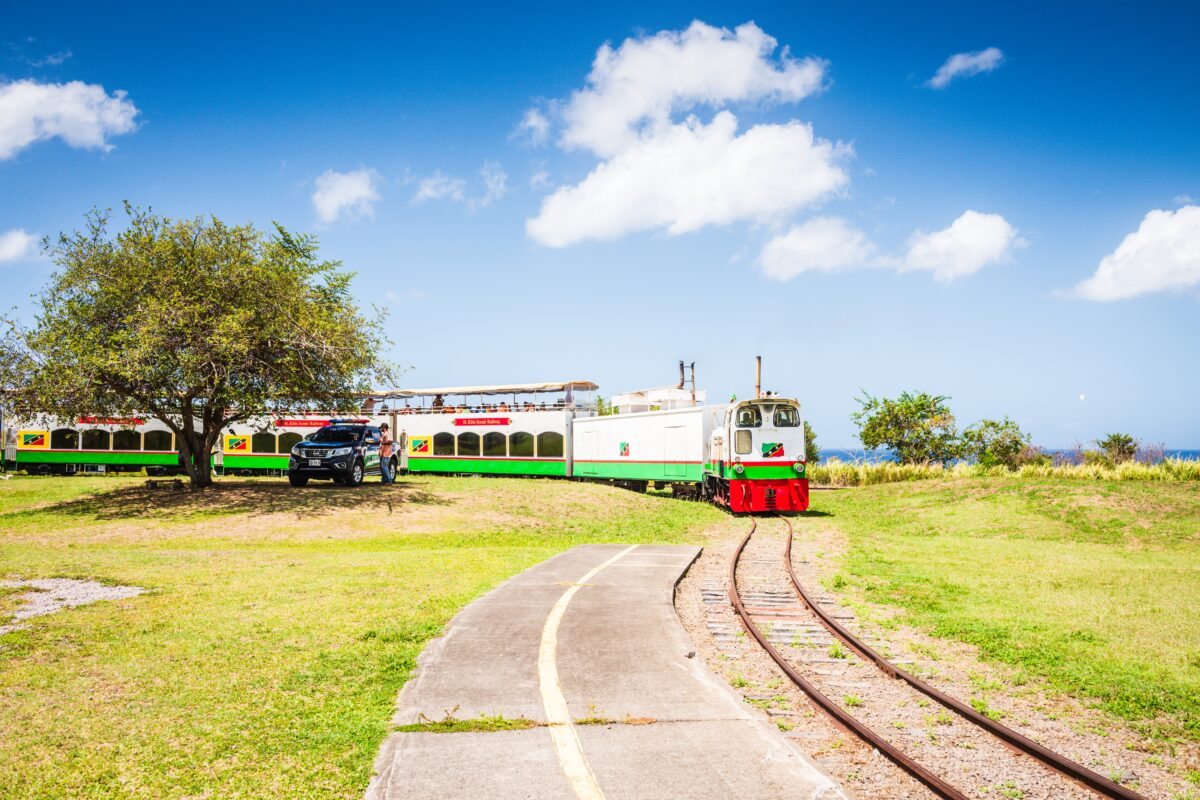
- St. Kitts, St. Kitts & Nevis – A small island with big contrasts, St. Kitts combines colonial history, volcanic scenery, and laid-back beaches. Families can ride the St. Kitts Scenic Railway, explore Brimstone Hill Fortress (a UNESCO World Heritage Site), or relax on the calm sands of South Friars Bay. Adventure-seekers might hike up Mount Liamuiga for panoramic views over the neighboring island of Nevis.
- Private Islands – Cruise line favorites such as Perfect Day at CocoCay, Half Moon Cay, or Castaway Cay offer curated beach experiences with water sports, splash zones, and buffet lunches—all just steps from the ship.
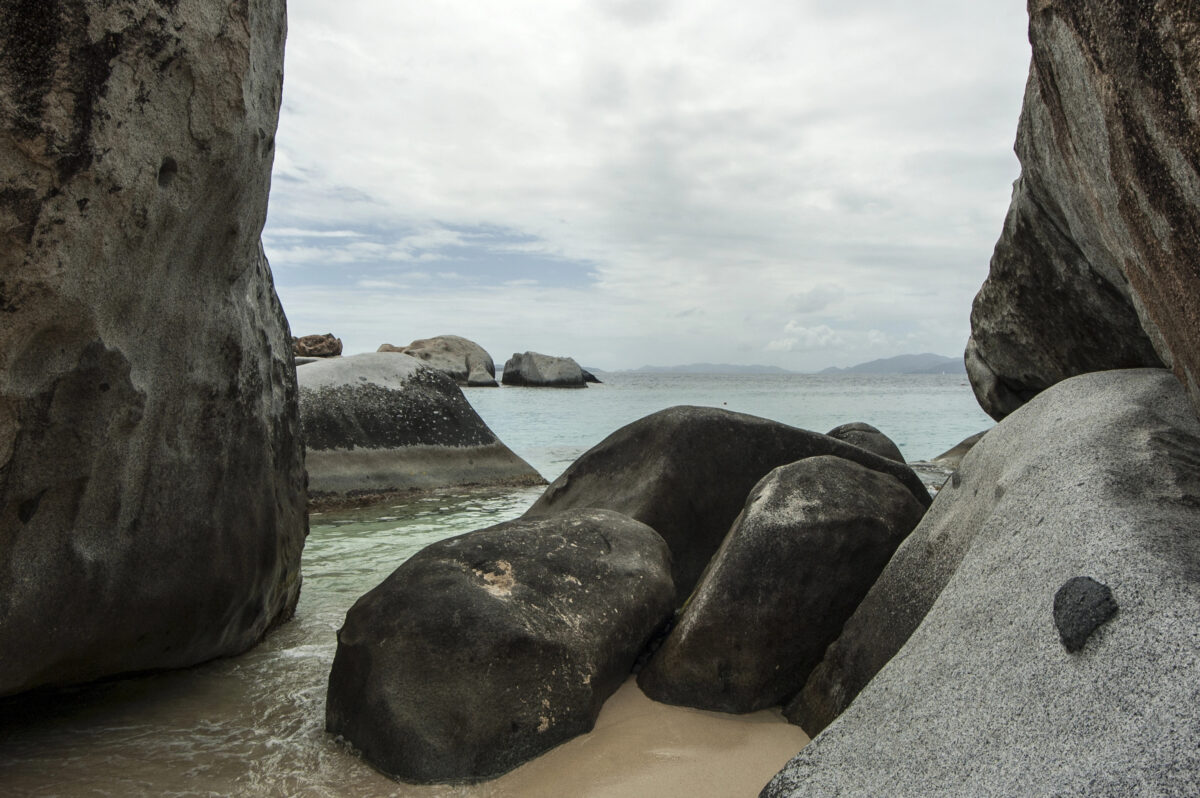
Most Eastern Caribbean itineraries are seven nights, departing from Miami, Fort Lauderdale, or Port Canaveral. A typical route visits three or four islands plus a private-island stop, making it one of the most port-intensive options in the Caribbean.
Also, while the Bahamas is considered geographically distinct from the Caribbean, Eastern Caribbean itineraries will frequently feature stops at Nassau.
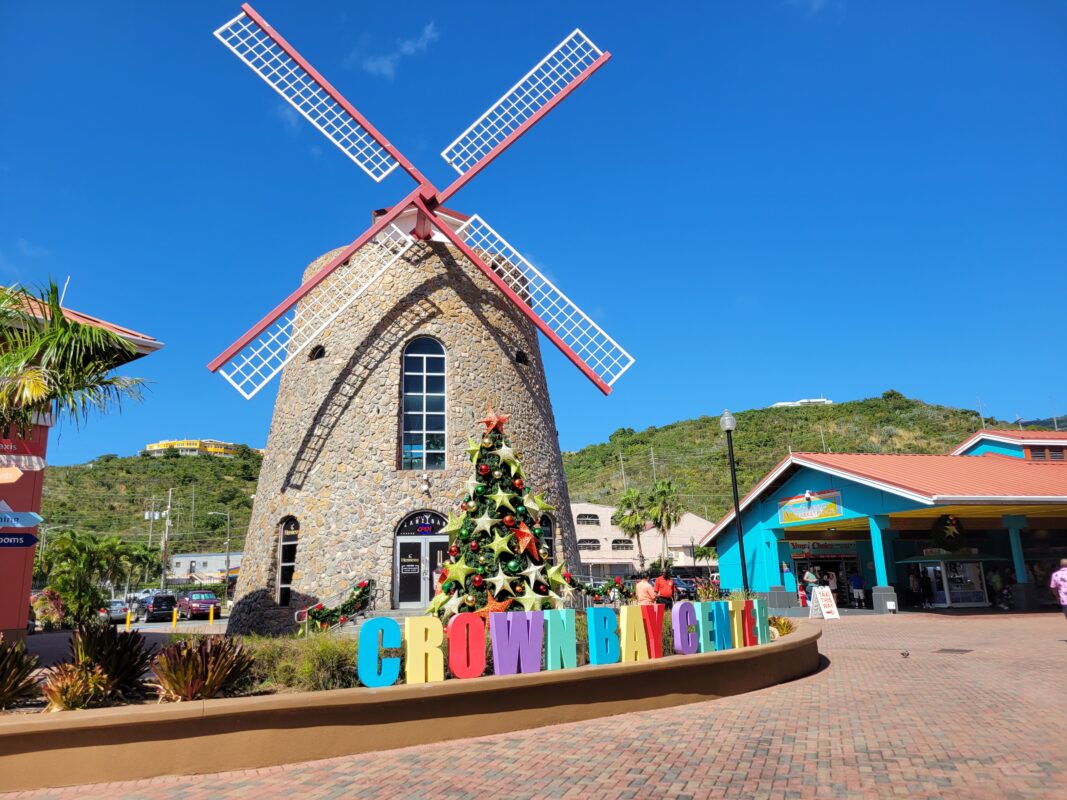
Best Excursions and Activities
Calm waters make this region perfect for snorkeling, catamaran sails, and beginner water sports. Families often choose a mix of beach days and light adventure. The region’s consistent weather and short distances make it a low-stress itinerary, especially for families cruising with younger kids.
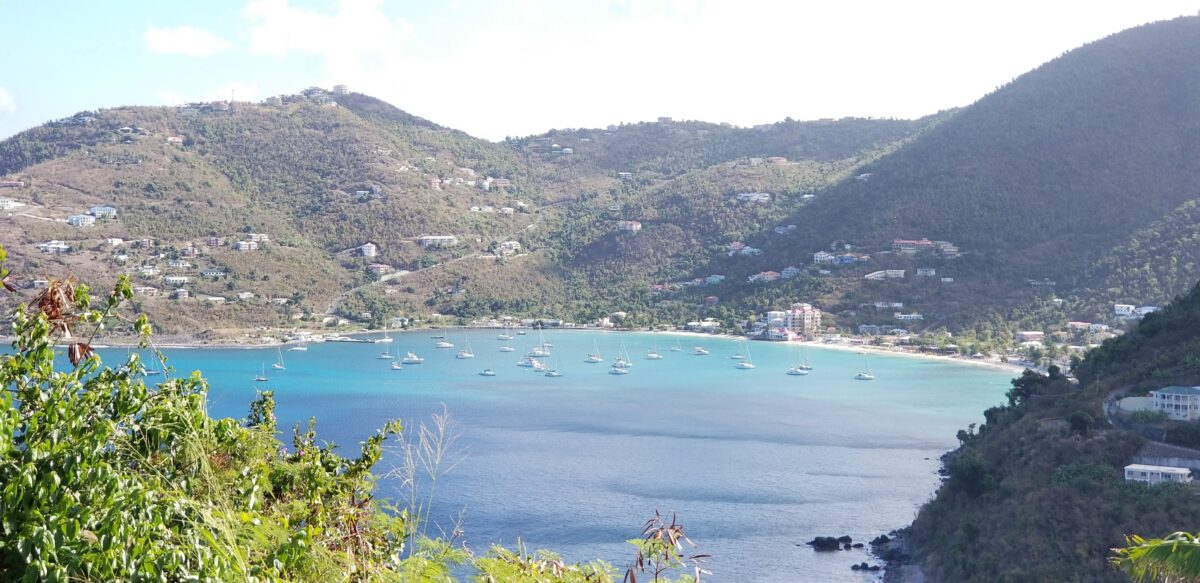
Overall, the Eastern Caribbean is a great “starter” itinerary. The islands are easy to navigate, the ports are family-friendly, and you can experience several destinations without feeling rushed.
The Western Caribbean: Adventure, Culture, and Natural Wonders
If your family enjoys a mix of exploration and cultural discovery, the Western Caribbean is one of the most rewarding cruise regions. Ports here stretch from Mexico’s Yucatán Peninsula to Central America and the western Caribbean islands, blending underwater adventure, rich history, and laid-back beaches.
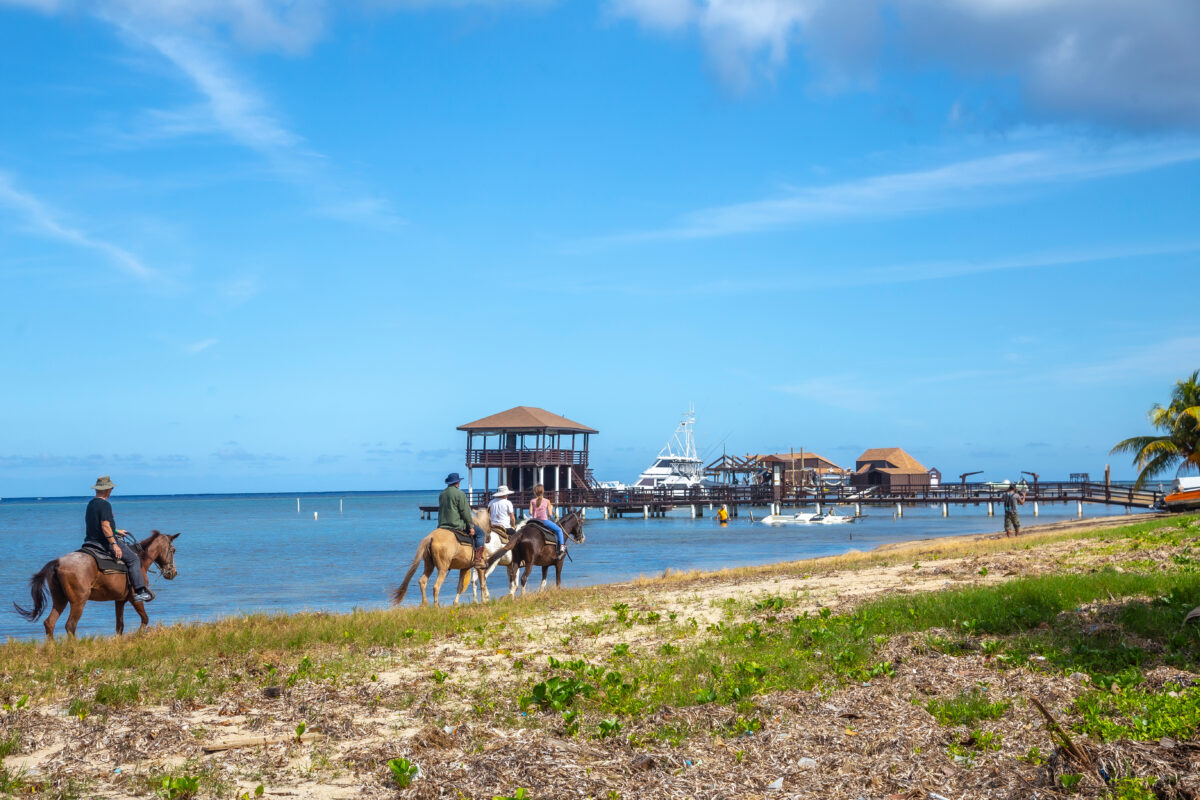
Horseback riders follow the shoreline near Roatán’s pier, where boats and beach pavilions line the calm Caribbean waters. (Credit: DepositPhotos) 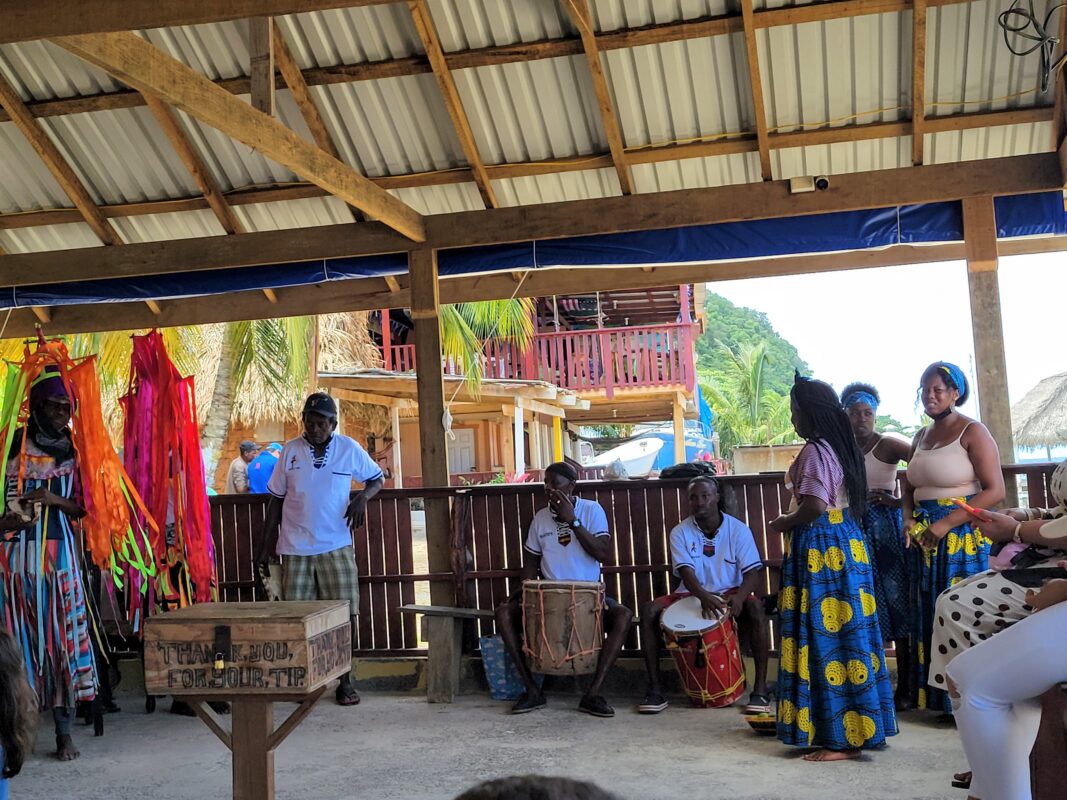
Local Garifuna performers share traditional drumming and dance during a cultural program in Roatán. (Credit: E. Warren/Family Cruise Companion)
Top Ports and What to Expect
- Cozumel, Mexico – One of the Caribbean’s busiest ports—and for good reason. Cozumel offers something for every travel style and budget: world-class snorkeling and diving, beach clubs, shopping, and easy island tours. You can also take a ferry to the mainland to visit Tulum or the spectacular Chichén Itzá. Just know that reaching Chichén Itzá involves a 3- to 3½-hour journey each way (ferry + bus). It’s awe-inspiring but not ideal for very young kids or those who dislike long rides. Cozumel itself can also be extremely crowded—on peak days, as many as ten ships may be in port.
- Costa Maya, Mexico – A relaxed, purpose-built port with a large pool area and shopping village. The nearby Maya Chan Beach Club and local beach at Mahahual offer quieter escapes, but reaching the Lost Mayan Kingdom Water Park or Mahahual requires a short taxi ride. Costa Maya works well for families who want a low-stress beach day without long travel times.
- Jamaica (Montego Bay, Ocho Rios, or Falmouth) – Known for Dunn’s River Falls, river tubing, and zip-line adventures through lush jungle. Some excursions visit former plantation estates that now serve as heritage sites showcasing local history, gardens, and Jamaican cuisine. Expect lively markets, reggae music, and plenty of island personality.
- Grand Cayman, Cayman Islands – Famous for Seven Mile Beach and Stingray City, where families can stand in waist-deep turquoise water as stingrays glide around them. The island’s reefs and beaches are consistently rated among the Caribbean’s best.
- Belize City, Belize – Ideal for active travelers and nature lovers. Excursions range from cave tubing through underground rivers to exploring Altun Ha or Lamanai, ancient Mayan ruins rising out of the jungle. Snorkeling and diving on the Barrier Reef rival Cozumel’s.
- Roatán, Honduras – A lush, mountainous island with two very different cruise terminals. Mahogany Bay (Carnival, Princess, Holland America) is a self-contained port with its own beach—you can easily spend the day without leaving the complex. Coxen Hole (Royal Caribbean, Norwegian) feels more local and bustling; expect many vendors near the gates. Booking a shore excursion in advance helps the day go smoothly. Roatán also offers excellent diving and wildlife encounters at small animal sanctuaries.
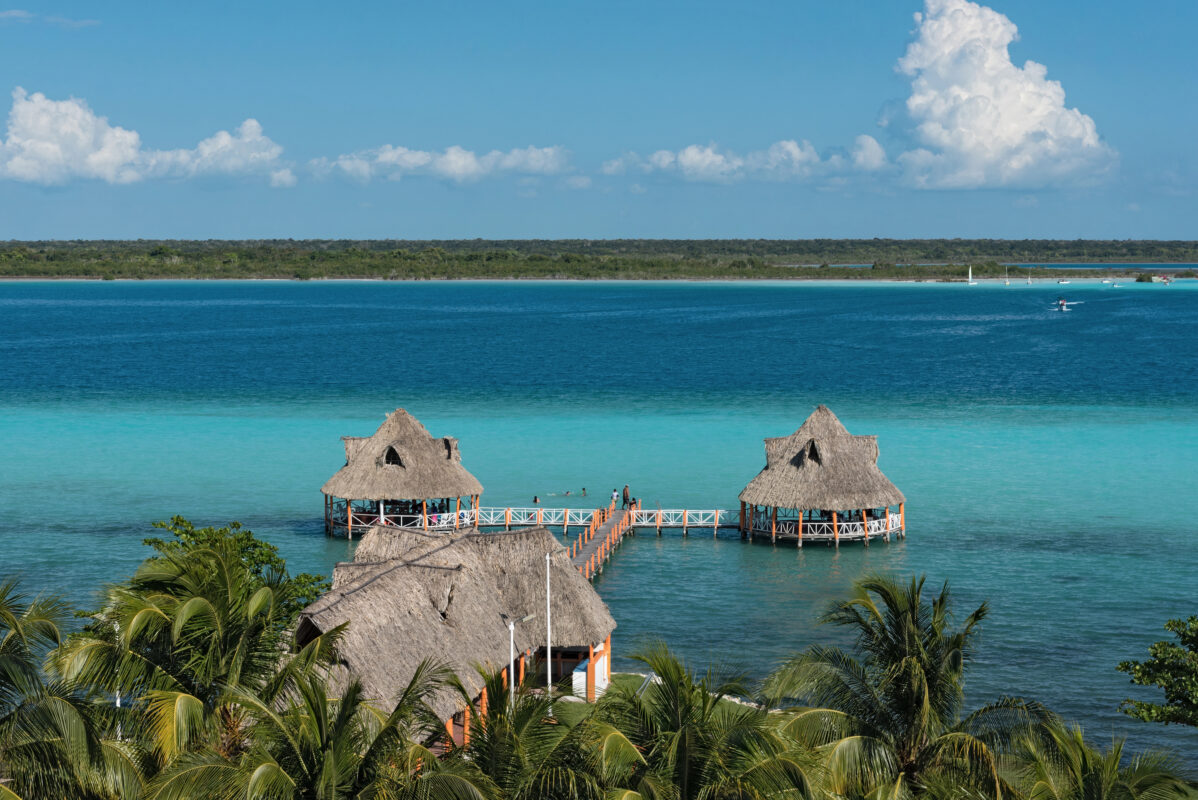
Overwater palapas stretch into the Bacalar Lagoon, a popular excursion from Costa Maya cruise port. (Credit: DepositPhotos) 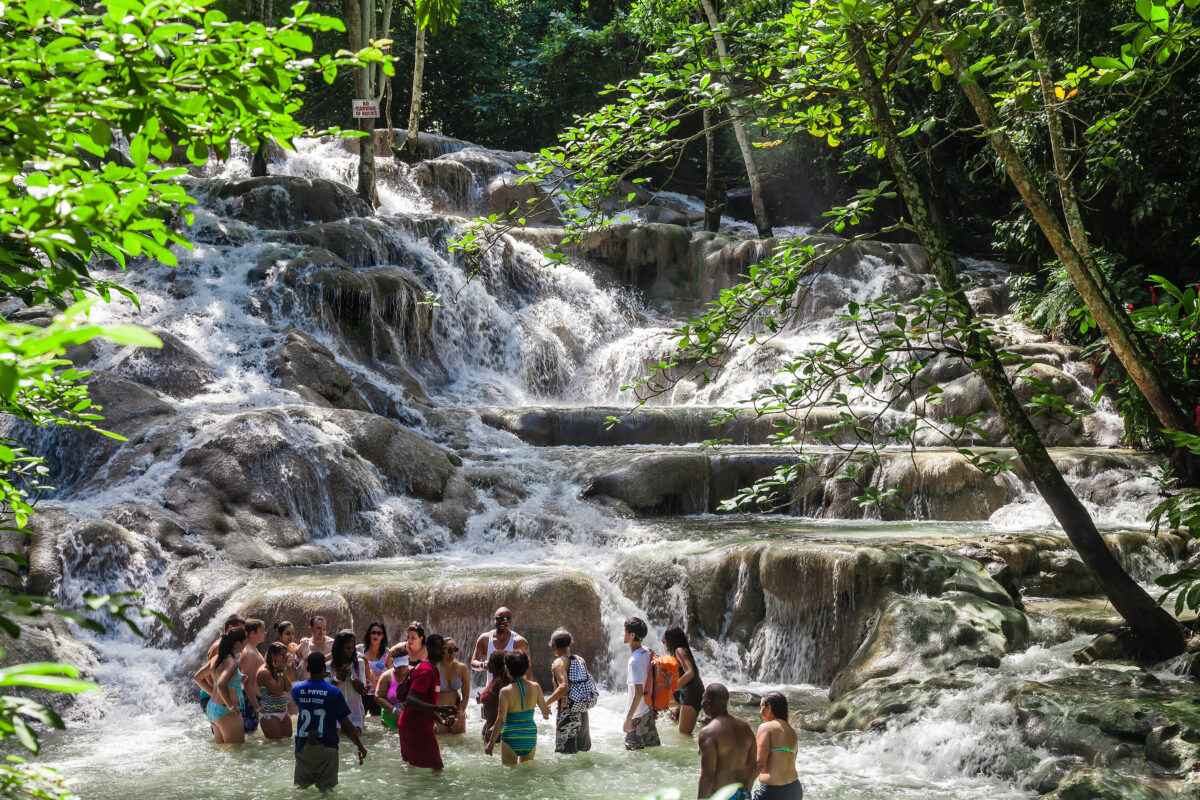
Visitors climb the terraced cascades of Dunn’s River Falls, one of Jamaica’s most famous natural attractions. (Credit: DepositPhotos) 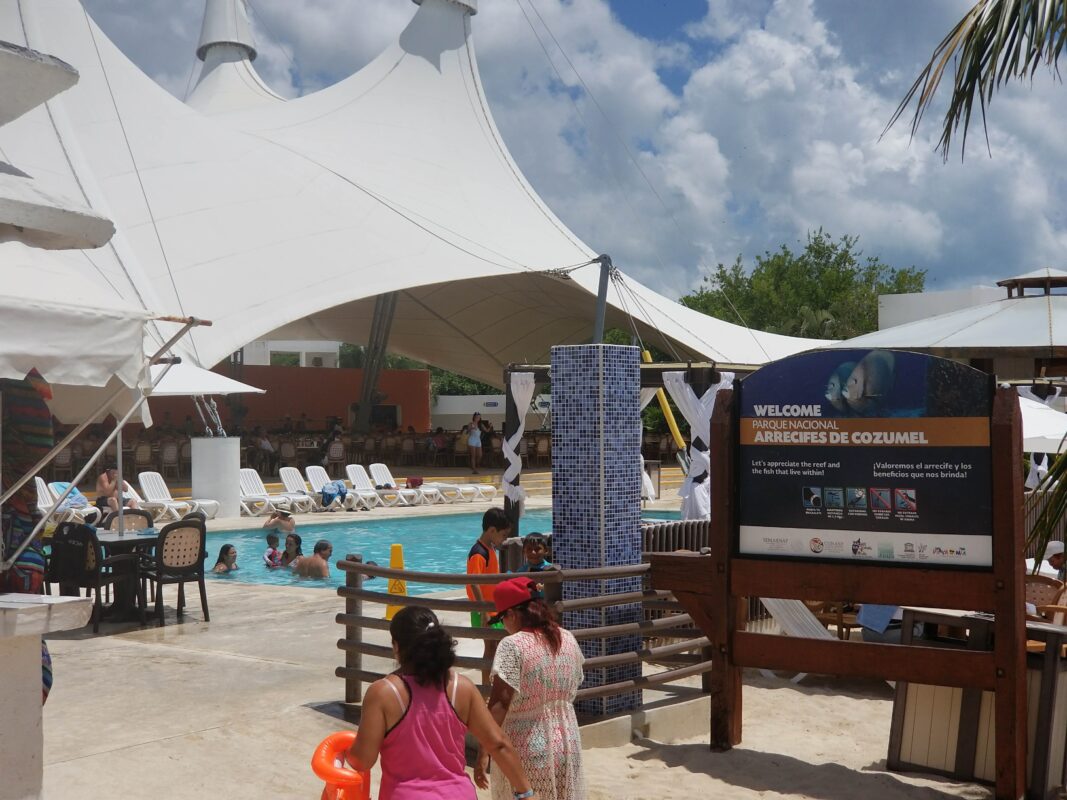
Guests enjoy the pool and shaded relaxation areas at Playa del Mia, a popular beach club in Cozumel. (Credit: E. Warren/Family Cruise Companion)
Most Western Caribbean cruises run seven nights, departing from Florida, Galveston, New Orleans, or Tampa.
Some cruise lines like Royal Caribbean and Carnival often alternate Eastern and Western routes weekly, so it’s easy to pair them for a back-to-back Caribbean adventure.




Clockwise from top left: A keel-billed toucan, Belize’s colorful national bird, perches among rainforest branches; a serene beachfront cabana on the Placencia Peninsula faces the Caribbean Sea; the ancient Lamanai ruins showcase Belize’s Mayan heritage with intricate stone carvings; and visitors float lazily down the Caves Branch River on an inner-tube adventure through the jungle. (Credits: DepositPhotos)
Best Excursions and Activities
The Western Caribbean is tailor-made for active families who like variety:
- Mayan Ruins: Visit Tulum or Chichén Itzá from Mexico, or Altun Ha in Belize. The sites are unforgettable, but expect long travel times—up to seven hours round-trip for Chichén Itzá.
- Water Adventures: Snorkel or dive the Mesoamerican Barrier Reef, swim with stingrays in Grand Cayman, or try shore diving in Roatán.
- Jungle and Cave Tours: Float through Belize’s limestone caves, go zip-lining in Jamaica, or join small-group wildlife tours in Roatán.
- Beach Days: Enjoy Mahahual’s beach clubs in Costa Maya or unwind on Seven Mile Beach.
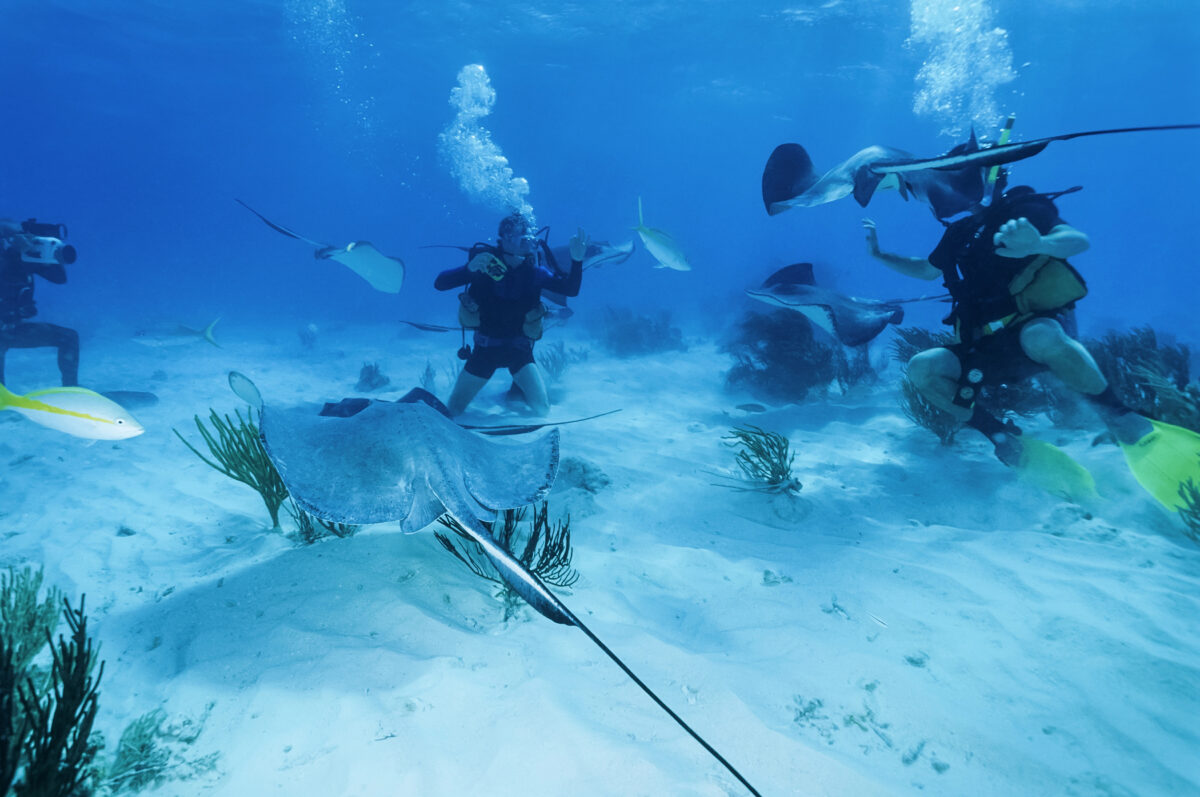
Diving with gentle stingrays at Grand Cayman’s famous Stingray City. (Credit: DepositPhotos) 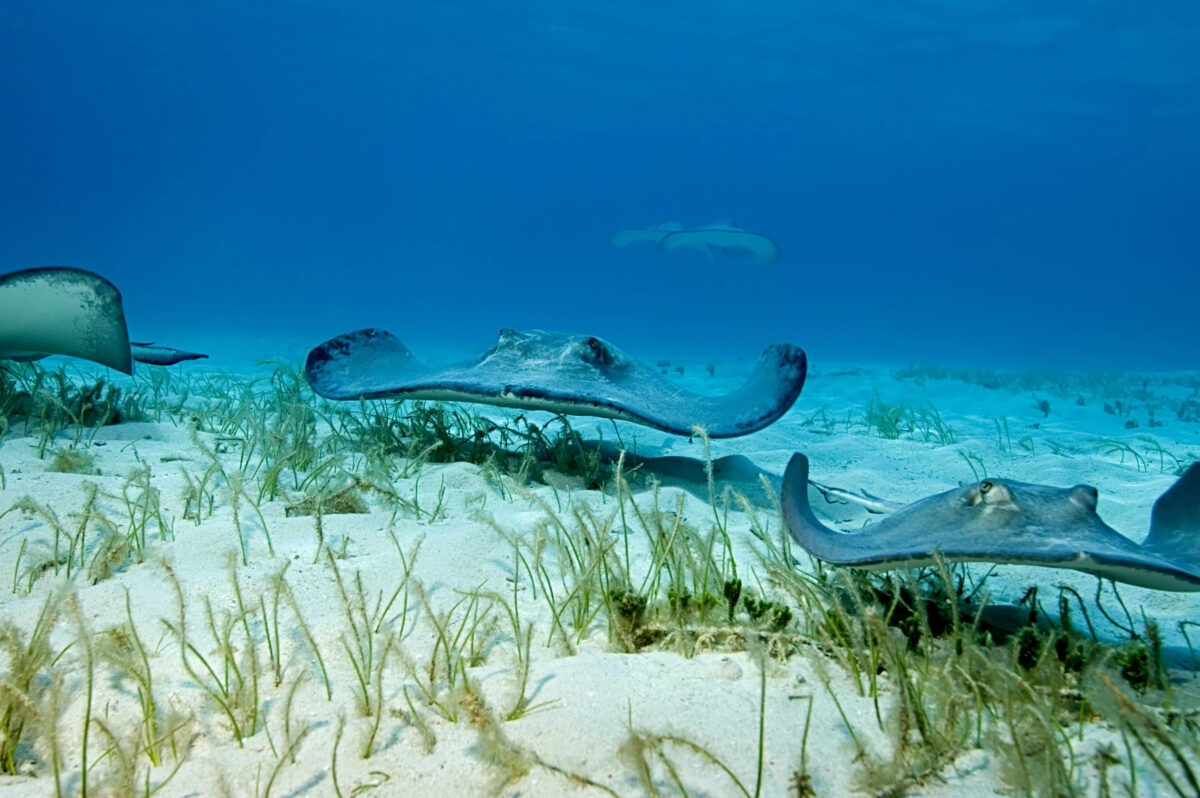
Southern stingrays glide across the shallow sandbars of Grand Cayman. (Credit: DepositPhotos)
This region’s excursions often run longer and involve more travel than those in the Eastern Caribbean.
They also provide more opportunities for adventure activities and cultural exploration.
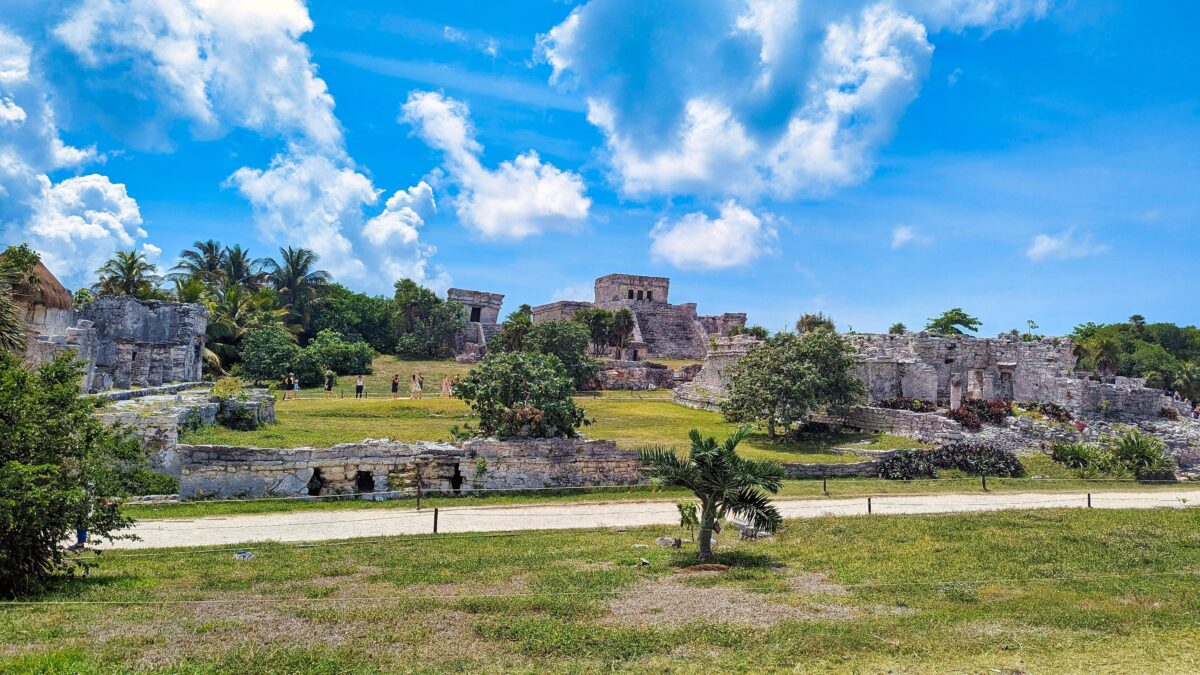
The Southern Caribbean: Diverse Cultures and Unspoiled Beauty
I have always thought of the Southern Caribbean as the more exotic destinations. If you have already sailed Eastern or Western routes and want islands that feel a little farther flung and a little less crowded, the Southern Caribbean is a great next step. These itineraries reach farther south, and often run a bit longer, which opens up more variety in scenery and culture.
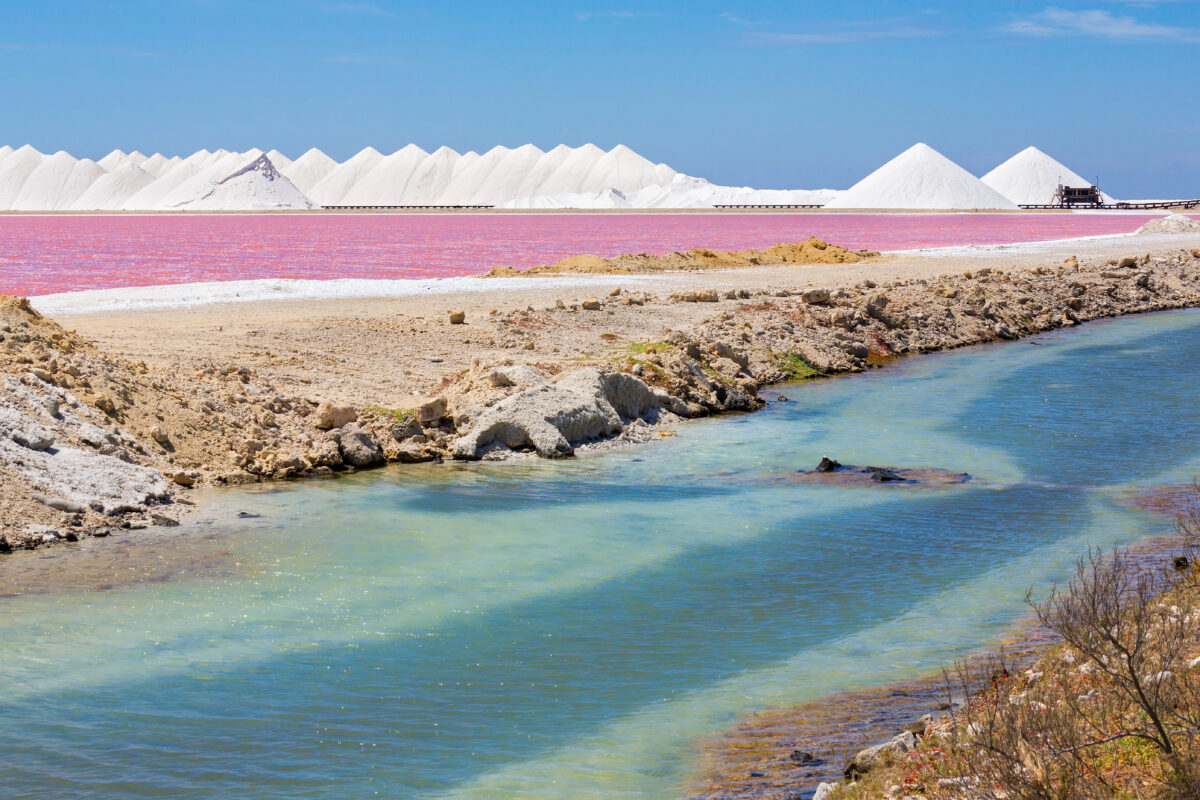
Top Ports and What to Expect
- Aruba (ABC Islands)
Flat, dry, and sunny year-round. Long white beaches pair with a desert interior of cacti and divi divi trees. Families can snorkel at Baby Beach, visit the Natural Pool, or rent jeeps inside Arikok National Park. Steady trade winds make it excellent for windsurfing. - Curaçao (ABC Islands)
Colorful Willemstad with Dutch style buildings is one of the Caribbean’s most photogenic waterfronts. Snorkeling is easy right from shore at Playa Lagun and Playa Kenepa, and you can mix sightseeing, light shopping, and a beach stop without going far. - Bonaire (ABC Islands)
Famous for protected reefs and clear water. It is a diver’s favorite and terrific for shore snorkeling in calm coves that work well for kids trying snorkel gear for the first time. - St. Lucia
The Piton peaks rise straight from the sea. Expect rainforests, waterfalls, and black sand beaches. Popular options include the drive-in volcano area near Soufrière, coastal catamarans, and resort day passes. - Grenada
The Spice Isle grows nutmeg, cinnamon, and cocoa in its lush interior. Top picks include Spice Estates, Annandale Waterfall, and the Underwater Sculpture Park. - Barbados
British heritage meets Caribbean warmth. Think cricket fields, rum distilleries, pretty west coast beaches, and caves and gardens inland. Bridgetown is sometimes used as a turnaround port by smaller or luxury lines. - Dominica
A favorite for nature lovers. Instead of wide sandy beaches, you get rainforests, hot springs, and waterfalls. Whale watching is a highlight during much of the year, and hiking in Morne Trois Pitons National Park appeals to active families.
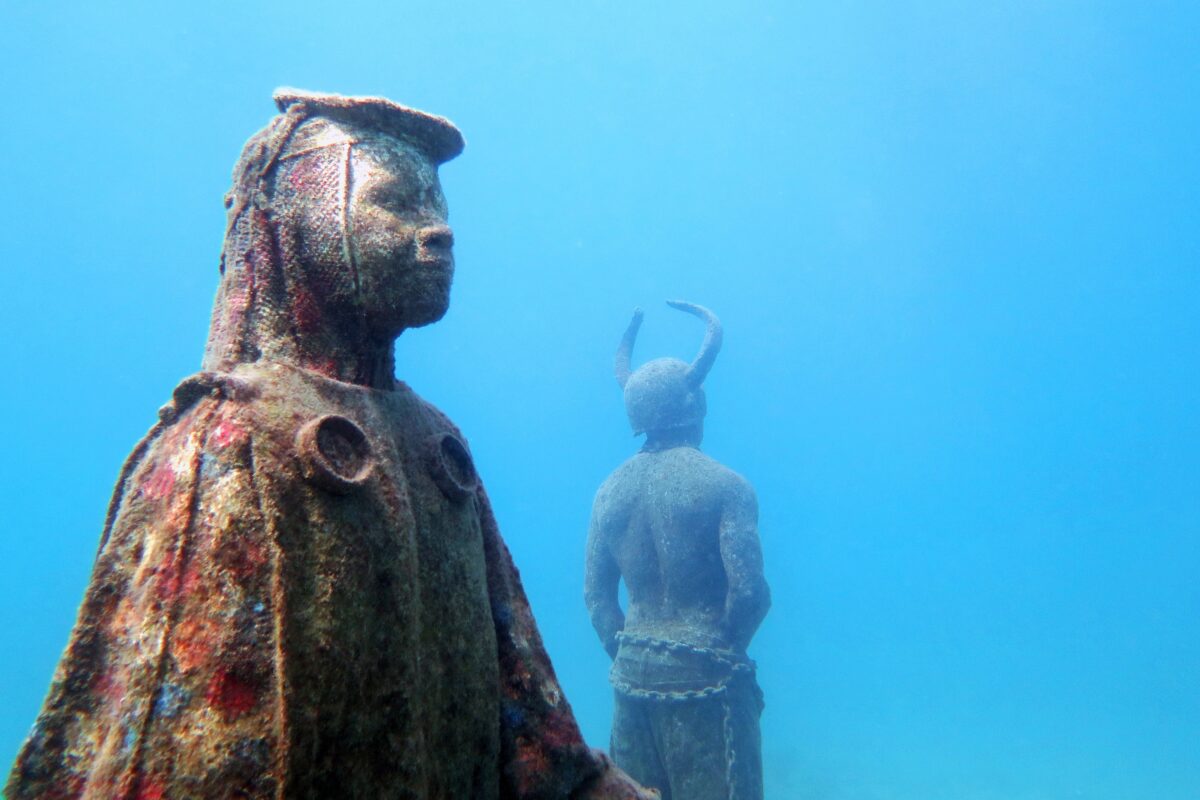
Most Southern Caribbean itineraries are 7 to 10 nights, usually round-trip from San Juan. Some longer sailings depart from Florida, and a few smaller or luxury ships may use Barbados as a port of call. Sailing from San Juan removes several sea days that you would otherwise spend reaching these islands from Florida, which often results in frequent port days.
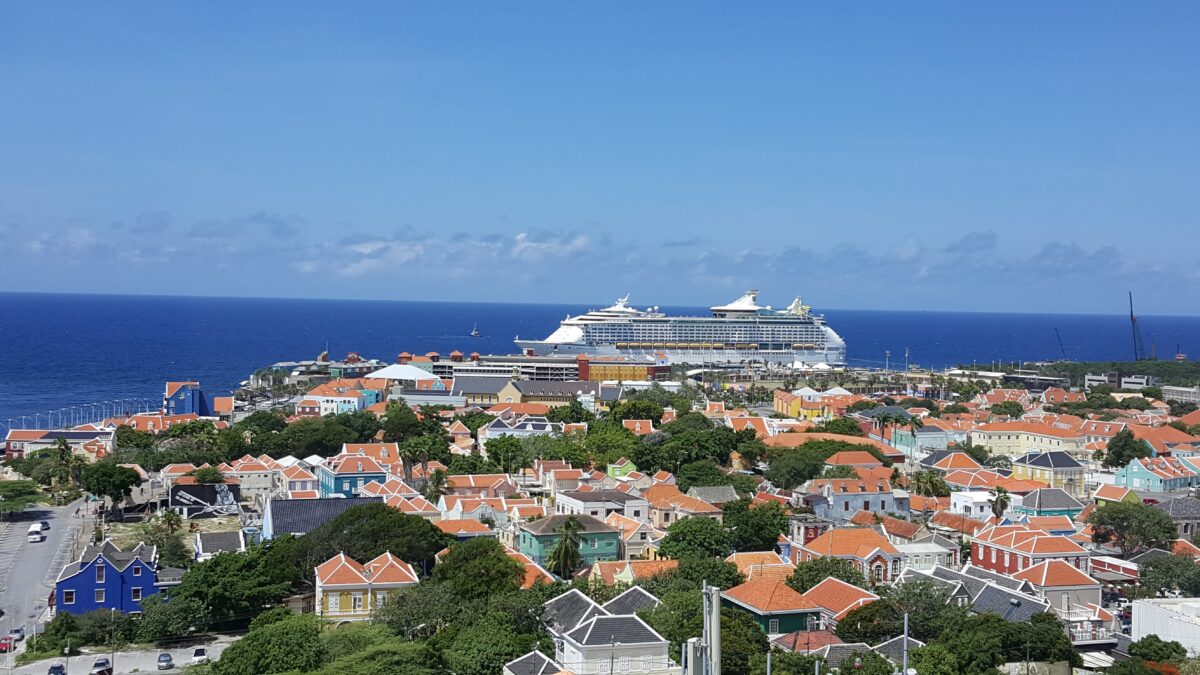
Experiences and Excursions
- Nature and adventure
Rainforest hikes in St. Lucia, volcanic landscapes, and easy off the beach snorkeling in Bonaire. - Cultural exploration
Spice estates in Grenada, rum distilleries in Barbados, and Curaçao’s floating market. - Beaches and relaxation
Eagle Beach in Aruba and the small coves of Curaçao offer calm water and a laid back feel, with crowds that are often lighter than on many northern routes.
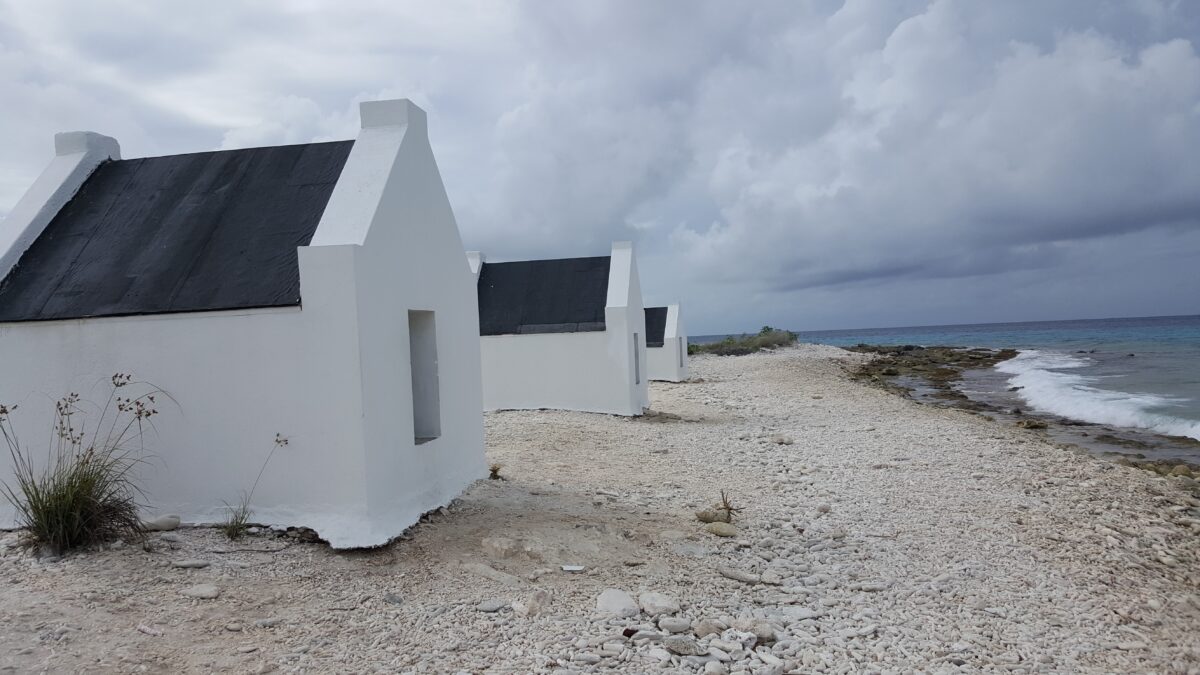
Many ports are compact and easy to navigate, so independent touring works especially well here for families who like flexibility.
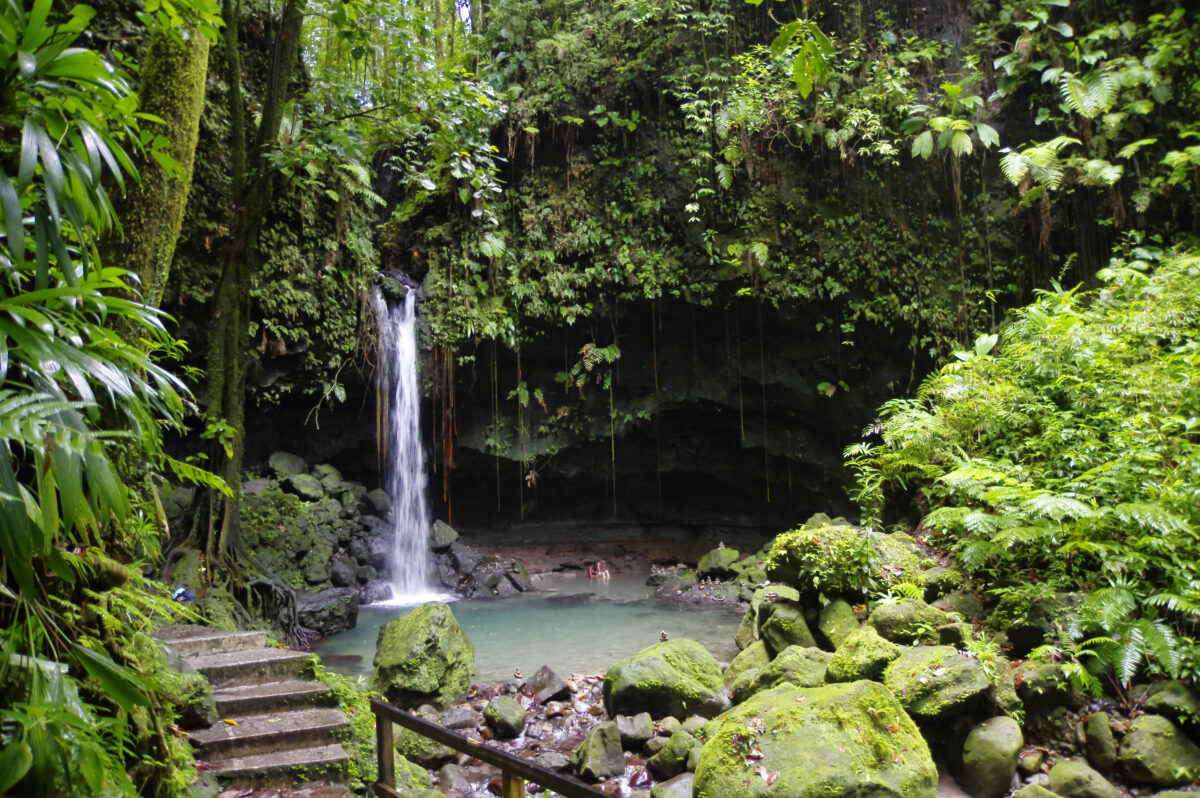
Cruising Tips from Experience
- Plan for warm, dry weather
The ABC Islands sit outside the main hurricane belt and usually see steady sunshine. - Expect frequent port days on many Southern routings
Especially on San Juan round-trip, you may see several ports in a row with limited time at sea. - Balance your days ashore
When you choose activities at each port, mix higher effort adventures with simple beach or town days so everyone stays happy and rested.
Eastern vs Western vs Southern Caribbean Cruise — Key Differences at a Glance
Comparison Table
Choosing between the Eastern, Western, and Southern Caribbean isn’t about finding the “best” region. It’s about matching your family’s interests, schedule, and travel style to the right combination of ports and activities. Use the comparison table below to see how the three regions stack up.
| Feature | Eastern Caribbean | Western Caribbean | Southern Caribbean |
| Typical Cruise Length | 5 to 7 nights | 5 to 7 nights (some up to 9 or 10) | 7 to 10 nights |
| Common Departure Ports | Miami, Fort Lauderdale, Port Canaveral, sometimes New York or Baltimore | Florida ports, Galveston, New Orleans, Tampa | Primarily San Juan, Puerto Rico; occasionally Florida (longer itineraries) or Barbados (select lines) |
| Popular Ports | St. Thomas, St. Maarten, San Juan, cruise line private islands | Cozumel, Grand Cayman, Jamaica, Belize, Roatán | Aruba, Bonaire, Curaçao, St. Lucia, Grenada, Barbados |
| Vibe | Classic beach days and easy island-hopping | Adventure, history, and culture | Scenic variety, smaller islands, and European influence |
| Best For | Families who want short sailings and easy island-hopping | Families who enjoy activity and cultural variety | Cruisers seeking diverse landscapes and longer, less crowded itineraries |
| Excursion Highlights | Snorkeling, shopping, relaxed beach time | Mayan ruins, stingray encounters, cave tubing | Rainforest hikes, reef snorkeling, spice and rum tours |
| Crowd Levels | High during peak winter months | Moderate, varies by port size | Generally lower, fewer mega-ships |
| Weather Considerations | Warm year-round, more rainfall in summer | Warm and humid; summer showers common | Warm and drier year-round; ABC Islands lie outside the main hurricane belt |
| Ease for Families | Short distances between ports and calmer seas | Mix of port types and activity levels | Frequent port days; longer travel to embarkation (usually requires flying to San Juan) |
Which Caribbean Region Fits Your Family?
Each Caribbean region shines in its own way. Here’s how to decide which may be the best fit for your next cruise:
- First-time cruisers or families with young kids:
The Eastern Caribbean offers calm seas, shorter sailing distances, and easy beach days. A comfortable way to see how your family enjoys life at sea. - Families who like adventure and variety:
The Western Caribbean brings a balance of cultural experiences and outdoor fun, from Mayan ruins to snorkeling with stingrays. - Repeat cruisers or those craving new scenery:
The Southern Caribbean delivers a wider mix of cultures, colorful architecture, and striking landscapes with fewer crowds.
If you’re still unsure, think about what a “perfect day” looks like for your family. If it’s beach chairs and calm seas, go East. If it’s adrenaline and history, head West. If it’s dramatic views and a change of pace, go South.
Closing Thoughts
So what’s the bottom line? Every Caribbean region has its own appeal. The best choice depends on what kind of experience your family wants, and how much time you have to explore. No matter which direction you sail, the Caribbean delivers warm water, bright days, and memories that last well beyond the trip.
More Posts About The Caribbean
-
You’ll Relish These fun Excursions at Roatan Honduras Cruise Port
-
Why You Should Absolutely Visit Perfect Day At Cococay This Year!
-
Why Is Jewelry Cheaper In The Caribbean?
-
Which St Maarten Beaches Near Cruise Port Are Really Worth Your Time?
-
What To Wear On Cruise Excursions – Tips For Visiting the Caribbean

Elaine Warren
Founder & Crew Chief
Elaine founded this website after publishing the book The Family Cruise Companion’s Guide to Cruising With Kids. (Second edition recently released!) She has sailed on 45 cruises (and counting). She loves helping families navigate their way to an adventure-filled, fun, and memorable vacation.

